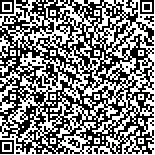|
| 引用本文: | 黄长江,董巧香,郑磊.1997年底中国东南沿海大规模赤潮原因生物的形态分类与生态学特征.海洋与湖沼,1999,30(6):581-590. |
| |
|
| |
|
|
| 本文已被:浏览 1910次 下载 1502次 |

码上扫一扫! |
|
|
| 1997年底中国东南沿海大规模赤潮原因生物的形态分类与生态学特征 |
|
黄长江, 董巧香, 郑磊
|
|
暨南大学水生生物研究所 广州510632
|
|
| 摘要: |
| 1997年11月底和12月19–25日对同年11月中旬至12月底发生于广东饶平县柘林湾及南澳岛周围海域的大规模赤潮的生物学、生态学及其危害进行了调查。研究表明,此次赤潮的原因生物是棕囊藻Phaeocystis pouchetii。这种赤潮生物在其生活史中有游泳单细胞和群体胶质囊2个生活阶段。游泳单细胞为球形或卵圆形,大小为6.0–7.2 μm,有2根不等长的鞭毛和1根定鞭丝。群体胶质囊为球形或近球形,直径为110 μm–2.6cm。直径在150 μm以下的小胶质囊呈略似实心的球体,细胞分布不均,大小只有3.1–5.2 μm;当直径大于200 μm后,胶质囊已呈中空状,细胞均匀地分布在胶质囊表面,细胞大小增至62–7.4 μm,群体胶质囊细胞内的2个林状叶绿体沿着细胞周壁相向嵌合。在赤潮高峰期,棕囊藻胶质囊遍布柘林湾,湾外的赤潮带达十数公里长,细胞密度最高为2.5×108cells/L,占浮游植物总细胞数的99.7%。此次赤潮的诱因主要是受1997–1998年度史上最强的厄尔尼诺现象的影响,导致我国东南沿海冬季气候反常,气温升高,东南风频吹。 |
| 关键词: 棕囊藻 有害赤潮 中国东南沿海 生物学 生态学 |
| DOI: |
| 分类号: |
| 基金项目:国家自然科学基金资助项目,39790110号 |
| 附件 |
|
| TAXONOMIC AND ECOLOGICAL STUDIES ON A LARGE SCALE PHAEOCYSTIS POUCHETII BLOOM IN THE SOUTHEAST COAST OF CHINA DURING LATE 1997 |
|
HUANG Chang-jiang, DONG Qiao-xiang, ZHENG Lei
|
|
Institute of Hydrobiology, Jinan University, Guangzhou, 510632
|
| Abstract: |
| A large scale harmful marine microalgal bloom occurred in the Southeast Coast of China from the middle of November to the end of December, 1997. In order to study the biology, ecology and damage of the bloom, we carried out an investigation to fish culturers at the end of November and a sampling investigation on 20–24th December, 1997, in the most hit area of the bloom—Zhelin Bay and its neighbouring open sea, Guangdong. The causative organism of the bloom was identified to be Phaeocystis pouchetii (Hariot) Lagerheim. It had two different stages in the life cycle, a colony and a unicellular stage. The colony was spherical in shape, and ranged from 110 μm up to 2.6 cm in diameter. The small colony under 150 μm looked like a solid ball. The cell distributed in the colony was not uniform. And a part of cells was deeply embedded within the gelatinous. When the colony increased to > 200 μm, it became hollow, and the cells were distributed uniformly around the periphery of the colony. The cells of the small colony were smaller with a size of 3.1–5.2 μm and a density of ca. 2.5×104 cells/mm2, while the large colony increased their cell size up to 6.2–7.4 μm with a mean density of 5.6×103 cells/mm2. The cells of a healthy, ripe colony looked angular slightly, with two partially located chlorophasts, but without flagella and haptonema. The unicellular stage was biflagellate, spherical or ovoidal with a size of 6.0–7.2 μm, possessing two flagella and a haptonema. The flagellate could be up to more than twice the cell size. Haptonema was short and not clear under usual light microscope. The P. pouchetii bloom covered an area of more than 1000 km2 from the Quanzhou Bay of Fujian in the north to Shanwei Coast of Guangdong in the south. The bloom reached a peak from the end of November to beginning of December, and collapsed from 22nd of December. In the present investigation, the P. pouchetii abundance in a convergent bloom band reached to 2.5×108cells/L. the bloom was so dense that the seawater was turned oily, brown and fishy smelling, and the masses of foam appeared in the surface. The caused extensive killing of the cultured fish in the Zhelin Bay of Guangdong only. The results showed that the colonies of P. pouchetii could only move totally depending on the wind, and its bloom occurrence was initiated by the abnormal climate in the Southeast Coast of China this year. Owing to the globally abnormal climate and the strongest El Nino Event of all time, the temperature in the Southeast Coast has been often as high as 25°C since the beginning of late fall of 1997, and a southeast wind occurred in the season when northwest seasonal wind should be. The P. pouchetii colony originated in the open sea was driven into the coastal waters. Finally, a great scale of harmful bloom occurred in the bays such as the Zhelin Bay. According to the fishermen, P. pouchetii colony occurs around the Nanpeng Islands in the late autumn every year, but the colonies are not so numerous as one in 1997 and usually cannot enter the Zhelin Bay due to the resistance of northwest monsoon. Three years ago, the colony also entered the Zhelin Bay driven by southeast winds, but it did not make a harmful bloom because the colony was not so numerous. |
| Key words: Phaeocystis pouchetii, Harmful bloom, The Southeast Coast of China, Biology, Ecology |
|
|
|
|
|
